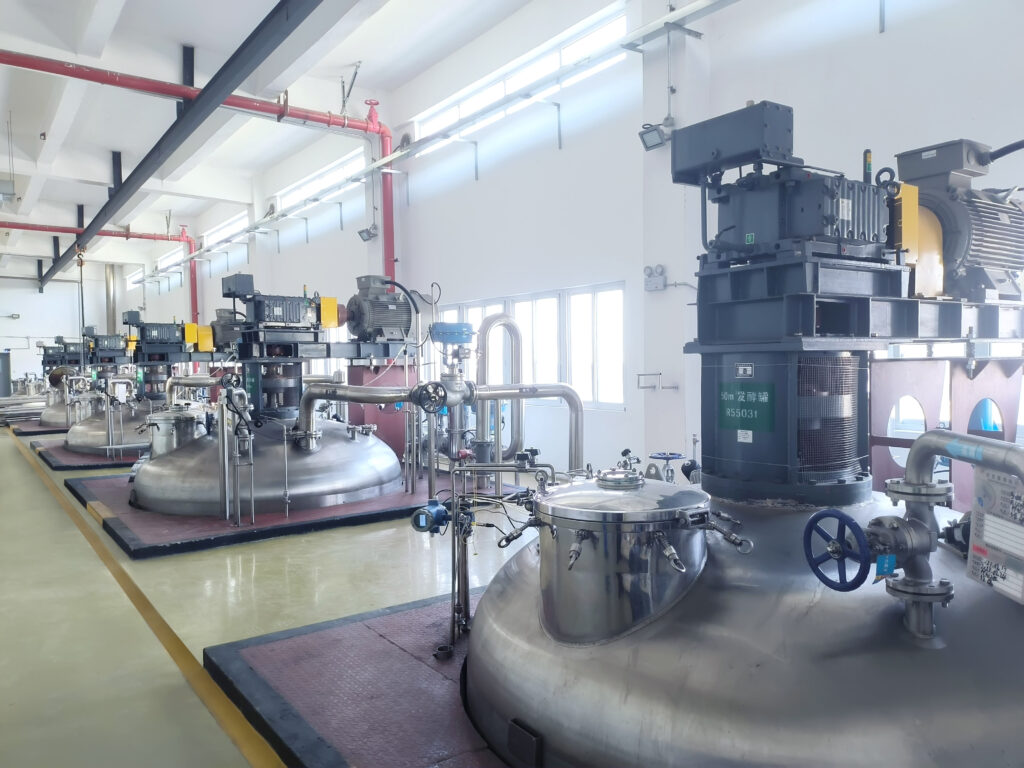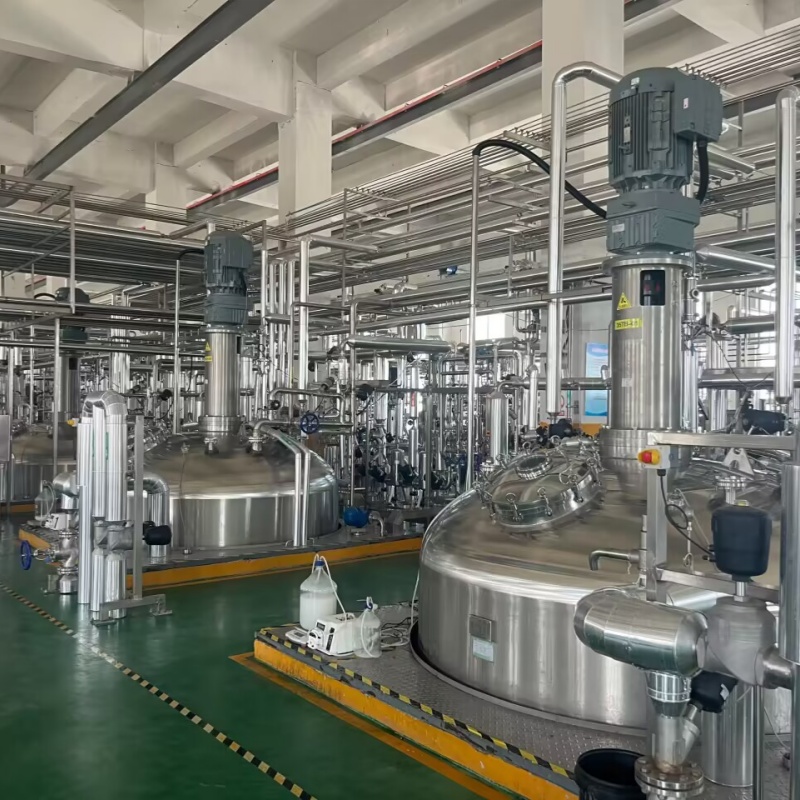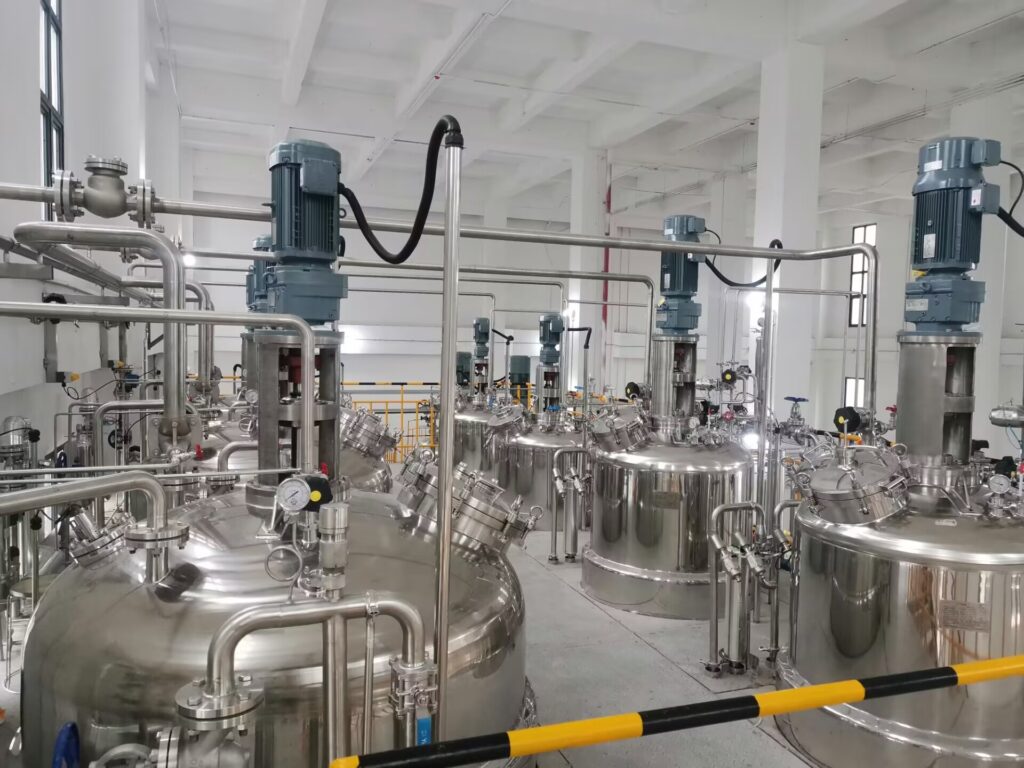
This article provides an in-depth guide for manufacturers on how to choose the right industrial bioreactor size, considering scalability, operational efficiency, and cost optimization. By understanding the impact of bioreactor capacity on production, businesses can make informed investment decisions that align with their operational needs.
Understanding Industrial Bioreactor Size and Its Impact on Production
What Does Industrial Bioreactor Size Refer To?
The size of an industrial bioreactor typically refers to its total working volume, measured in liters or cubic meters. The scale can vary significantly depending on the industry:
- Laboratory scale: 1L – 20L (for research and process development)
- Pilot scale: 20L – 500L (for process validation and small-scale production)
- Industrial scale: 500L – 20,000L+ (for full-scale commercial production)
Larger bioreactors allow for higher production volumes but require advanced control systems to maintain process stability. Selecting the right size ensures maximum yield without compromising efficiency or increasing production costs unnecessarily.

Key Factors to Consider When Selecting Industrial Bioreactor Size
Choosing the correct bioreactor size for industrial production depends on several key factors:
2.1. Production Scale and Capacity Requirements
Manufacturers should evaluate their production demands and long-term scalability. Considerations include:
- Batch vs. Continuous Processing: Batch processes require specific volume capacities for each cycle, while continuous processing may operate with smaller volumes but at a higher frequency.
- Expected Growth: If a company plans to scale production, selecting a modular or scalable bioreactor system may be more cost-effective.
2.2. Type of Bioprocess (Microbial vs. Cell Culture)
The nature of the bioprocess influences the required bioreactor capacity:
- Microbial fermentation (e.g., antibiotics, enzymes, biofuels): Generally requires smaller reactors (1,000L – 10,000L) due to higher growth rates.
- Cell culture production (e.g., monoclonal antibodies, vaccines): Requires larger bioreactors (10,000L – 20,000L) due to slower growth and delicate handling needs.
2.3. Space and Facility Constraints
Industrial bioreactors require significant space for installation, maintenance, and operation. Manufacturers should assess:
- Available floor space and ceiling height.
- Utility requirements (e.g., power, cooling, ventilation).
- Regulatory compliance for cleanroom environments.
2.4. Cost and Operational Efficiency
Larger bioreactors increase production efficiency but also involve:
- Higher initial investment in equipment and infrastructure.
- Increased energy consumption for mixing, aeration, and cooling.
- More complex process control systems to ensure stability.
Manufacturers should conduct a cost-benefit analysis before selecting a bioreactor size.
Industrial Bioreactor Size Categories and Their Applications
3.1. Small-Scale Industrial Bioreactors (500L – 2,000L)
Best for:
- Small-batch pharmaceutical production
- Enzyme manufacturing
- Pilot-scale biofuel development
Advantages:
- Easier process control
- Lower initial investment
- Faster setup and validation

2000L Small-Scale Industrial Bioreactors
3.2. Medium-Scale Industrial Bioreactors (2,000L – 10,000L)
Best for:
- Large-scale enzyme production
- Biopharmaceuticals (e.g., monoclonal antibodies)
- High-value food additives (e.g., probiotics, vitamins)
Advantages:
- Balance between capacity and flexibility
- Suitable for both batch and continuous processes
- Efficient use of space and resources

Bailun 10000L Medium Scale Industrial Bioreactors
3.3. Large-Scale Industrial Bioreactors (10,000L – 20,000L+)
Best for:
- Mass production of vaccines
- Large-scale biofuel fermentation
- Bulk commodity chemicals (e.g., bioethanol, bioplastics)
Advantages:
- High production efficiency
- Lower per-unit production costs
- Essential for commercial-scale manufacturing

50000L industrial bioreactor
Scaling Up: Transitioning from Pilot to Industrial-Scale Bioreactors
Scaling up from a pilot plant to full-scale industrial production is one of the biggest challenges in bioprocessing. Considerations for industrial bioreactor scale-up include:
4.1. Process Optimization
- Maintain consistency in microbial or cell growth rates across different scales.
- Use computational fluid dynamics (CFD) to model mixing and oxygen transfer.
- Adjust impeller design, aeration rates, and nutrient feeding strategies.
4.2. Risk Mitigation in Scale-Up
- Avoid contamination risks by using single-use bioreactors in sensitive applications.
- Conduct extensive validation runs to ensure process reproducibility.
- Implement real-time monitoring systems for quality control.
4.3. Modular and Flexible Design
- Consider multi-use modular bioreactors that can be upgraded as production needs grow.
- Use hybrid systems (e.g., stainless steel + single-use components) to balance flexibility and cost.
Emerging Trends in Industrial Bioreactor Sizing and Technology
5.1. Single-Use Bioreactors (SUBs) for Large-Scale Production
Traditional stainless steel bioreactors dominate industrial-scale production, but single-use bioreactors are gaining traction due to:
- Faster turnaround times.
- Reduced risk of cross-contamination.
- Lower capital investment in cleaning and sterilization.
5.2. Smart Bioreactors with IoT and AI Integration
- AI-driven process optimization helps fine-tune bioreactor conditions in real-time.
- IoT-enabled bioreactors allow remote monitoring and predictive maintenance.
- Advanced digital twin simulations help model and optimize industrial-scale production.
5.3. Sustainability and Energy Efficiency
- Innovations in low-energy agitation and aeration reduce operating costs.
- Bioreactor material advancements (e.g., coatings that reduce biofilm formation) improve longevity.
- Closed-loop waste-to-energy systems integrate bioreactors into sustainable manufacturing processes.
Final Thoughts: Choosing the Right Industrial Bioreactor Size for Your Business
Selecting the optimal industrial bioreactor size is a critical factor that influences production efficiency, cost-effectiveness, and scalability. To ensure the right investment:
- Assess your production scale – Choose between small, medium, or large-scale bioreactors based on current and future needs.
- Consider process-specific requirements – Different industries have unique demands, from pharmaceutical-grade sterility to high-throughput biofuel processing.
- Plan for scalability – Modular and flexible bioreactor systems enable smooth scale-up and adaptation to market demands.
- Evaluate cost and operational efficiency – Optimize capital expenditures while ensuring long-term sustainability.
By carefully analyzing these factors, manufacturers can select a industrial bioreactor size that aligns with their operational strategy, maximizes productivity, and enhances competitiveness in the biotech industry.



